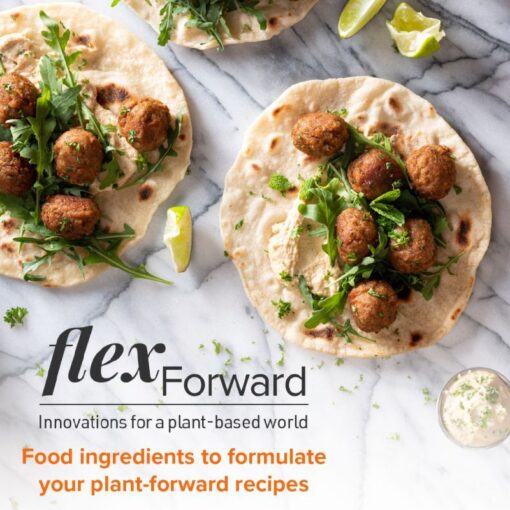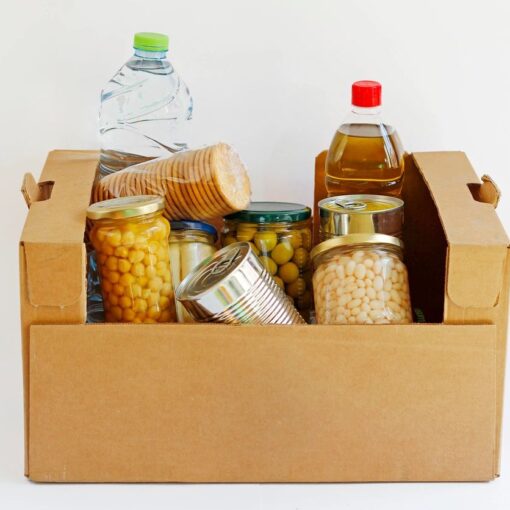There are two key trends driving the food and beverage industry into 2022: Personal Health and Planet Health. The following article breaks down some of the technologies, ingredients and solutions behind the second of these.
Resource Efficiency
Sustainability in the entire supply chain, from the local to the global environmental impacts of a product, to the social treatment and equity of all those involved, is becoming the ‘way we do business’ and is essential for planet health. The crux of the environmental challenge, relates to resource efficiency, for example: the energy mass balance; the volumes of water utilised in processing, or; the utilisation of the waste streams produced. This is influencing the direction of travel for technology development that will be essential in ensuring future of our planet health.
There is noticeable development in biotechnology to produce food products; whether it is dairy proteins, palm oil, collagen or rare sugars to name a few. These processes that are not limited by the availability of the original natural source are increasingly entering the supply chain. Biotechnology processes could also provide an essential tool in the valorisation of waste streams, with them providing an essential feedstock resource.
The challenges to planet health, resource availability and growing populations, has brought a renewed focus to technologies that have had a lower profile, such as crop gene-editing. A recent relaxation of attitudes in the UK is allowing trials on gene-edited crops. Gene editing cuts specific genes out of its sequence, allowing for the production of higher yielding, more nutritious, or varieties able to withstand changing climates. Advocates stress that this is not genetic modification, and simply accelerates an end-point that could otherwise be achieves through selective breeding.
Automatic for the people
Robotics are not new in the agri-food sector; ‘pick and place’ robots, automated palletizers, and produce pickers have been relative common for many years. Processes that were previously considered to be intuitive, or a ‘black-art’ are now being re-imagined as ‘precision agriculture’ and ‘precision processing’ through the application of big data analysis, computational chemistry, artificial intelligence and machine learning. This technology is allowing new, or even existing systems, to increase their capability, improve performance and extend their range through quickly adapting to new product ranges with minimal ‘learning time’. The application of these intelligent systems is vast and ranges from in-line quality analysis, supply chain environment monitoring, functional ingredients screening and production, as well as robotics.
As autonomous units, such as robots and drones, become more intelligent and more responsive, they become increasingly mobile and self-navigating widening their applications and use throughout manufacturing and agricultural settings. This includes activities which were previously off-limits due to the unpredictable nature of the setting, environment or task in hand. Flexibility and adaptability are now becoming programmable and this will be an essential part of maximising agricultural yields and improving manufacturing efficiencies both essential to improve planet health.
Conscious treats.
A shift in 2020 and 2021 to more direct to customer (D2C) and home delivery is almost certainly set to continue as new customers continue on-line retail platforms they embraced out of necessity. This facilitates a change in packaging format, firstly to ensure that pack formats are suited to the remote shopping experience, but help address the underlying issues with plastic and employing sensitivity to anticipated price sensitivity to food indulgence.
The longer-term economic impact of Covid is yet to be fully realised and will continue into 2022, and with the additional pressures of energy cost increases, will result in consumers having a lower spending power as prices increase across the board. They will be looking for those ‘quick wins’ on indulgence and quality, without breaking the bank. Treat-time us likely to become less frequent, smaller and more focussed. Innovation activity should therefore be considerate to this and focus on true value engineering, and not just cheapening or reducing the size of products. A key part of delivering that quality will be through providing evidence that the ingredients are high quality, the process has added value, and, if making dietary or functional claims, that the resulting product has the desired efficacy, ensuring consumer feel they are getting the benefit – emotional and nutritional out of their indulgent purchases. This will enable the consumer to permit that indulgence, when spending habits are under pressure.
This investment in real value engineering will not be lost on short-term economic concerns, as long term benefit will be realised through achieving greater resource efficiency, sourcing more sustainable ingredients and ensuring the value added through real functionality is sustainable and truly adding value.
Waste not.
Globally around one third of all food is wasted, so there needs to be a greater focus on the recovery of lost nutrition wherever possible. This will ensure that resource efficiency is maximised and the environmental impact of food production is minimised. There will undoubtedly be a shift to the recovery of waste through evolution of new products enabled by waste streams. Examples include cereal bars made from Brewers spent grain or smoothies from surplus fruit, the recovery of functional components or the use of waste stream as feedstock for precision fermentation processes to develop sustainable sources of essential ingredients.
Frozen assets.
Frozen food has traditionally been seen as the cheap alternative to fresh. However, it does provide a reliable preservative free way of preserving food. The Covid years saw a new appreciation of freezers and frozen foods, in particular where there was concern that staples, such as bread, could run low. Frozen food could experience some of a renaissance as consumers look to re-stock with a wider range of products, and ensure that they are kept as ‘good as fresh’. Looking forward, with the food supply chain being impacted by Brexit, HGV and industry labour shortages, the need to keep the freezer stocked is here to stay. The challenge for the industry will be to adapt products to ensure that they deliver the quality of the fresh alternatives.
Supply Chain Transparency.
The success of these activities will increasingly be validated through the use certification and labelling. The simplicity of the message is essential, and where ‘Carbon Footprints’ seemed vague, ‘Carbon neutrality’ or ‘Net Zero’ could be the key planet health message that is effective.
Consumers are expecting to see social audits as well as environmental audits. Descriptions relating to recyclability of packaging and sustainable processes are now expected by consumers. More progressive brands are now supporting social projects that are either local (feeding the local homeless) or remote (water aid charities) as a way to off-set/give back. Combined with carbon labelling and resource efficiency, this is an essential part of supply chain transparency and the development of trust with an increasingly aware consumer base. The application of Blockchain to trace-ability is the next step in achieving an unbroken chain of evidence and food security for a growing population in a climate-fragile world. However, this needs to be sensitive to the risk of ‘greenwashing’ as labelling schemes are developed.
Understanding how the whole system fits together and how day day actions impact on planet health as well as personal health, requires individuals to change their mindset from consumers to citizens. This won’t happen overnight, but maybe the fall out from a global pandemic will be the catalyst that is required to achieve this.




